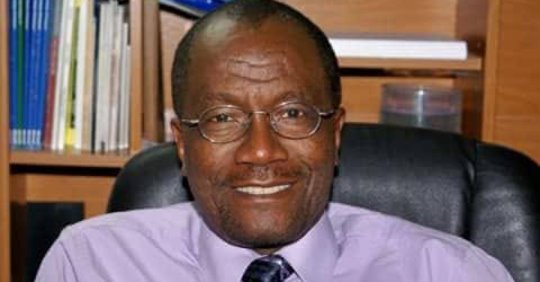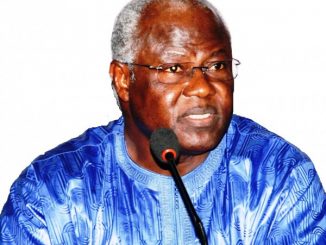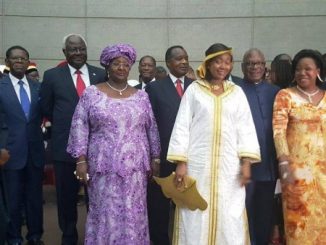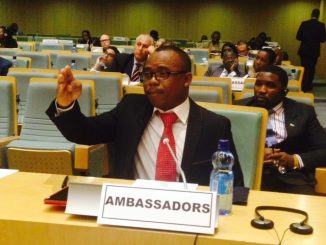
By Yanqui Zaza
Has the Government of Sierra Leone embraced the idea to use customers’ cash deposited with commercial banks to finance government expenses? Businesses and governments around the world usually borrow money, for example, in exchange for treasury (bonds) sold to investors to make up revenue shortfall. The Government of Sierra Leone, through its subsidiary (i.e., the Central Bank of Sierra Leone-BSL), sells bonds to commercial banks, and also sells bonds to its 100% owned subsidiary (BSL).
What if the government had sold its promissory notes to foreign investors, and its subsidiary (BSL) had bought investment portfolios from foreign borrowers? Foreign investors would remit cash to Sierra Leone, in exchange for their promissory notes, and commercial banks would not use their clients’ cash. Interest income would then come to BSL from foreign borrowers, increasing government revenue. Sadly, foreign investors do not buy treasury notes of poor countries.
As a result of undue influence, governments usually sell a significant number of its notes to commercial banks and its state-owned bank. In December 2018, commercial banks and BSL purchased Sierra Leone’s government’s notes worth $394M. (See page # 63 of Sierra Leone Annual Accounts). Included in that amount, BSL bought from government $160M worth of bonds in 2017, up from $92M in 2015. (See page # 92 and Page 78 of BSL Audited Annual Report respectively). To get Sierra Leonean currency value, multiply the US currency ($1.00) value by using 5,080 in 2015; 7,384 in 2017; and 8,556 in 2018.
BANK GOVERNOR KELFALA KALLON
Why did officials not just demand money from the Government-owned bank (BSL) and finance its expenditure? Or why did Government not print new banknotes (i.e., new money? Experts say that selling treasury notes in exchange for cash is a better economic arrangement than printing new banknotes. This is because the former does not increase the number of banknotes. Printing new banknotes does, and by extension, weakens local currency against foreign currency, increases interest rate, etc.
But wait a minute, where did BSL get the $160M to buy the notes since it had limited cash? For instance, its Net Equity (i.e., Total Assets minus Total Liabilities) dropped from $58M in 2016 to $53M in 2017, a difference of $5M. Also, what about losses generated in previous years? Moreover, even if it had generated profits, the residual profits, after certain distributions, would have been transferred to the government.
This statement is supported by the Bank of Sierra Leone Act No. 5 (41) which states “within 30 days after publishing the financial statements…any remaining distributable earnings shall be transferred to the government as revenue for budget of the government.” Based on this Act, BSL does not keep any significant amount of rainy-day-savings. Therefore, it lacks the privilege to accumulate excess cash reserves to buy investment portfolios.
Although BSL did not own huge excess cash, it kept significant amount of cash received from commercial banks, government entities, state-owned entities, etc. It used customers’ cash to buy government notes. This was a wrong decision because it is not in the profit-generating-business. The question now is, did the government honor the terms of the agreements? Since Sierra Leone’s records of payment history are not available, so we will review the operations in Liberia.
The Liberian government did not only fail to fulfill its promise, but it also failed to pay debts owed to commercial banks. Worse, CBL did not even include the $260M debts, on its balance sheet, Liberia owed its buyers until 2018. On page # 11 of the 2018 Audited Financial Statements, CBL increased government’s debt to $493M in 2018, up from $257M in 2017.
According to IMF Report No. 19/169, CBL did not only mention that government failed to disclose Liberia’s debts. It also stated that the Government’s debt increased to $355M in 2018, from $260M in 2016 (i.e., an increase of $95M). During 2019, commercial banks also did not honor depositors’ requests to withdraw their money, even after the government printed $100M new banknotes between 2016 and 2018.
Back in 2009, Liberia had cash problem. For instance, CBL did not only include IMF’s $290M Special Drawing Rights (i.e., a privilege to borrow money, credit card, draw down, etc.) as part of Liberia Net International Foreign Exchange Reserves (i.e., like taking cash advance on a credit card), but the government insisted that it owned the $290M. The cash problem continued into 2016. Former President Ellen Johnson Sirleaf admitted to the cash shortage but attributed it to the decline in commodity prices.
Her subordinate, the Governor of the Central Bank, Mr. Milton Weeks, provided a different narrative. He stated during a press conference that the $444M outflow was the reason why commercial banks were not honoring customers’ request to withdraw their cash. His statement was wrong because more cash came in than the cash that went out. For instance, on page # 34 of its 2018 Annual Report, CBL stated that remittances inflows were higher in 2016 through 2018. In 2017, Inward was $103 million higher than Outward ($571M Inward and $468M Outward).
If the IMF reports on Sierra Leone, Guinea, Ivory Coast, and Liberia are reliable, unfortunately, the issue of cash shortage is not going away anytime soon. The below schedules of the four countries show that all four countries had cash shortage in 2019. This is projected through 2023.With limited options available to borrow money, state-owned central banks will continue to borrow customers deposits to makeup cash shortfalls.
Sierra Leonean Leone
| 2019 | 2020 | 2021 | 2022 | 2023 | |
| Total Rev. | 6,658 | 8,229 | 8,974 | 10,519 | 12,104 |
| Cash Deficit | (1,085) | (1,485) | (1,728) | (1,508) | (1,572) |
Source: (IMF)
Ivory Coast CFA Franc Source: (IMF)
| 2019 | 2020 | 2021 | 2022 | 2023 | |
| Total Rev. | 5,158 | 5,189 | 5,815 | 6,385 | 6,919 |
| Cash Deficit | (785) | (1,055) | (978) | (1,043) | (1,080) |
Guinea Franc
| 2019 | 2020 | 2021 | 2022 | 2023 | |
| Total Rev. | 19,710 | 21,675 | 26,152 | 30,447 | 35,743 |
| Cash Deficit | (3,225) | (4,818) | (6,606) | (6,359) | (5,564) |
Source: (IMF)
Liberia Liberian currency (All amounts in L$)
| 2019 | 2020 | 2021 | 2022 | 2023 | |
| Total Rev. | 905 | 913 | 929 | 946 | 992 |
| Cash Deficit*1 | (248) | (292) | (267) | (209) | (288) |
1: Revenue and expenditures excluding grants. (IMF)
These countries might reduce cash shortage if they change their economic system and allow their governments to play a role in the ownership and management of certain economic activities such as mining, agriculture, forestry, etc. This change might allow them to receive additional revenue. In this way, Government will not rely solely on cash collected from taxpayers as do Countries such as the United States and Great Britain do. These countries owed huge debts, $22T and $9T respectively because a significant amount of their revenue comes from taxpayers.
On the other hand, countries such as Germany, Botswana and Nigeria benefit from their natural and do not rely solely on residents’ taxes. Nigeria receives about 60% of government revenue from its oil, and Botswana gets 55% from diamonds. True, both countries reported cash shortage, but because of different financial arrangements. For example, the local interest rate was 5% in Botswana, while Liberia’s local interest rate was 15% during the same year. Predictably, Botswana took loan to finance its capital expenditure, which is 20% of its total expenditure, a good investment decision.
Sierra Leone IMF 2020 20/169 Report
(https://books.google.com/books?id=gvqiDwAAQBAJ&pg=PP2&lpg=PP2&dq=International+Monetary+fund+country+number+19/169&source=bl&ots=xL1HHjA-ix&sig=ACfU3U1L3oHtnf-dBbSmXvVagKGs5ACgHA&hl=en&sa=X&ved=2ahUKEwj_8Lb66bXpAhUqknIEHQ1NBdQQ6AEwAXoECB4QAQ#v=onepage&q=International%20Monetary%20fund%20country%20number%2019%2F169&f=false) Liberia’s debt owed to commercial banks (IMF Country Report No. 19/169)
(https://www.cbl.org.lr/doc/Annual_Report_2018_Feb_12_2019.pdf)
Central Bank of Liberia 2018 Annual Report
(http://www.bsl.gov.sl/Annual%20Report%202017.pdf)
Sierra Leone Central Bank 2017 Annual Statements.
(http://www.bsl.gov.sl/BSL%20ANNUAL%20REPORT%20-%202015.pdf)
Sierra Leone Central Bank 2015 Annual statements
The Liberian Government concluded that the L16.5B was accounted for, and money was not missing.
(GOVERNMENT OF SIERRA LEONE (GOSL))Sierra Leone 2017 and 2018 Accounts
(https://www.ft.com/content/096da1e6-deb4-11e9-9743-db5a370481bc)
World Bank and International Monetary Fund 2020 Spring Meeting
https://www.ft.com/content/096da1e6-deb4-11e9-9743-db5a370481bc
(https://en.wikipedia.org/wiki/State-owned_enterprises_of_Germany)
Germany owns private companies
(https://www.cbl.org.lr/doc/FinancialStatement_2018.pdf)
Central Bank of Liberia 2018 Audited Financial statements
(https://www.bog.gov.gh/wp-content/uploads/2019/07/AnnRep-2018.pdf
Ghana Central Bank Audited Financial Report
(IMF Guinea April 2020 copy.pdf (2.7 MB)



